
M.U.L.E. is a multiplayer video game written for Atari 8-bit computers by Ozark Softscape. Designer Danielle Bunten Berry takes advantage of the four joystick ports of the Atari 400 and 800 to allow four-player simultaneous play. Published in 1983, M.U.L.E. was one of the first five games from new company Electronic Arts, alongside Axis Assassin, Archon: The Light and the Dark, Worms?, and Hard Hat Mack. It is primarily a turn-based strategy game, but incorporates real-time elements where players compete directly as well as aspects that simulate economics.

Balance of Power is a strategy video game of geopolitics during the Cold War, created by Chris Crawford and published in 1985 on the Macintosh by Mindscape, followed by ports to a variety of platforms over the next two years.

Christopher Crawford is an American video game designer and writer. Hired by Alan Kay to work at Atari, Inc., he wrote the computer wargame Eastern Front (1941) for Atari 8-bit computers which was sold through the Atari Program Exchange and later Atari's official product line. After leaving Atari, he wrote a string of games beginning with Balance of Power for Macintosh. Writing about the process of developing games, he became known among other creators in the nascent home computer game industry for his passionate advocacy of game design as an art form. He self-published The Journal of Computer Game Design and founded the Computer Game Developers Conference.
Galahad and the Holy Grail is an action-adventure game for Atari 8-bit computers. It was designed and programmed by Douglas Crockford and published by the Atari Program Exchange in 1982. Influenced by Adventure for the Atari VCS and Arthurian legend, it contains almost 100 rooms–according to the manual–which are switched between with a flip screen technique. The game resulted in Crockford being hired at Atari Research. Following the closure of the Atari Program Exchange, a lightly updated version of Galahad and the Holy Grail was published by Antic Software.

Tanktics: Computer Game of Armored Combat on the Eastern Front is a 1976 two-player tank battle computer wargame by Chris Crawford. It was Crawford's first video game. He initially self-published it as Wargy I. It was published by Avalon Hill in 1981 as Tanktics.

Beyond Castle Wolfenstein is a 1984 World War II stealth game. A direct sequel to Castle Wolfenstein, it is the second game in the Wolfenstein series, and the last installment to be released by original developer Muse Software before the name was revived for a first-person shooter in 1991. Castle Wolfenstein was written solely by Silas Warner for the Apple II, while the sequel was developed simultaneously for the Apple II and Commodore 64 by Warner, Eric Ace, and Frank Svoboda III. It was quickly ported to the Atari 8-bit computers and MS-DOS.
Gossip is a video game created for Atari 8-bit computers by then-Atari, Inc. employee Chris Crawford. The documentation indicates that Gossip is an Atari Program Exchange title, but it was not listed in any of the published catalogs and may not have been released at all.

Eastern Front (1941) is a computer wargame for Atari 8-bit computers created by Chris Crawford and published through the Atari Program Exchange (APX) in 1981. A scenario editor and assembly language source code for the game were also sold by APX as separate products.
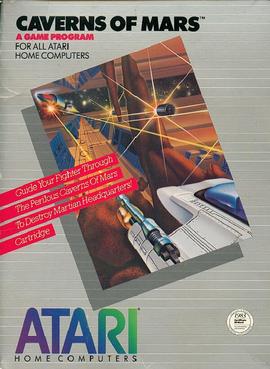
Caverns of Mars is a vertically scrolling shooter for Atari 8-bit computers. It was written by Greg Christensen, with some features later added by Richard Watts, and published by the Atari Program Exchange (APX) in 1981. Caverns of Mars became the best selling APX software of all-time and was moved into Atari, Inc.'s official product line, first on diskette, then on cartridge.

Patton vs. Rommel is a computer wargame designed and programmed by Chris Crawford for the Macintosh and published by Electronic Arts in 1986. Versions for MS-DOS compatible operating systems and Commodore 64 were developed by Sculptured Software and published in 1987.

Blue Max is a scrolling shooter written by Bob Polin for Atari 8-bit computers and published by Synapse Software in 1983. It was released for the Commodore 64 the same year. U.S. Gold published the Commodore 64 version in the UK in 1984 and ported the game to the ZX Spectrum. In 1987, Atari Corporation published Blue Max as a cartridge styled for the then-new Atari XEGS.
Atari Program Exchange (APX) was a division of Atari, Inc. that sold software via mail-order for Atari 8-bit computers from 1981 until 1984. Quarterly APX catalogs were sent to all registered Atari 8-bit owners. APX encouraged any programmer, not just professionals, to submit video games, educational software, applications, and utilities. A few internally developed Atari products were sold through APX, such as Atari Pascal, the developer handbook De Re Atari, and a port of the arcade video game Kangaroo.

Many games, utilities, and educational programs were available for Atari 8-bit computers. Atari, Inc. was primarily the publisher following the launch of the Atari 400/800 in 1979, then increasingly by third parties. Atari also distributed "user written" software through the Atari Program Exchange from 1981 to 1984. After APX folded, many titles were picked up by Antic Software.

Legionnaire is a computer wargame for Atari 8-bit computers created by Chris Crawford released through Avalon Hill in 1982. Recreating Julius Caesar's campaigns in a semi-historical setting, the player takes command of the Roman legions in real-time battles against the barbarians.
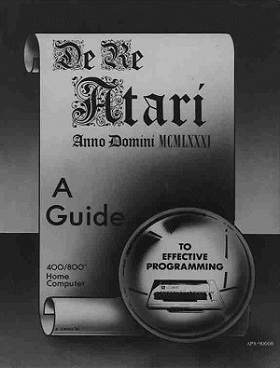
De Re Atari, subtitled A Guide to Effective Programming, is a book written by Atari, Inc. employees in 1981 and published by the Atari Program Exchange in 1982 as an unbound, shrink-wrapped set of three-holed punched pages. It was one of the few non-software products sold by APX. Targeted at developers, it documents the advanced features of the Atari 8-bit computers and includes ideas for how to use them in applications. The information in the book was not available in a single, collected source at the time of publication.
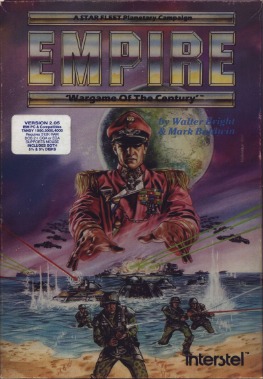
Empire: Wargame of the Century is a video game based on Empire developed by Walter Bright and published by Interstel Corporation in 1987.
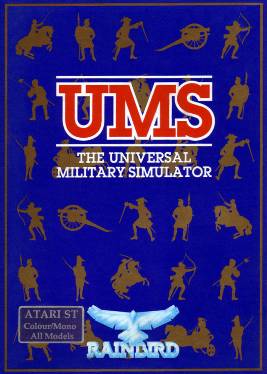
The Universal Military Simulator is a computer game developed by Rainbird Software in 1987 for the Macintosh, Tandy 4000, and IBM PC compatibles. In 1988, both Atari ST, Amiga versions were released. The game was created by Ezra Sidran. The PC and Amiga versions were ported by Ed Isenberg. The game spawned two sequels: UMS II: Nations at War and The War College: Universal Military Simulator 3.

Roadwar Europa is a 1987 video game designed by Jeffrey Johnson, developed by George MacDonald, and published by Strategic Simulations. The game was released for Amiga, Apple II, Atari ST, Commodore 64, and DOS. The game is a sequel to the 1986 video game Roadwar 2000, which was also published by Strategic Simulations.

Ogre is a 1986 computer game based on the Ogre board wargame. It was released by Origin Systems for the Apple II, Amiga, Atari 8-bit family, Atari ST, Commodore 64, MS-DOS, and Macintosh.
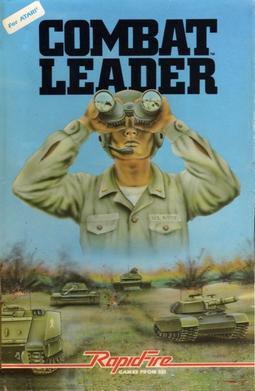
Combat Leader is a 1983 video game published by Strategic Simulations.

















